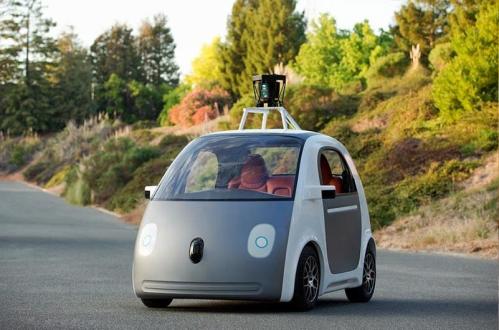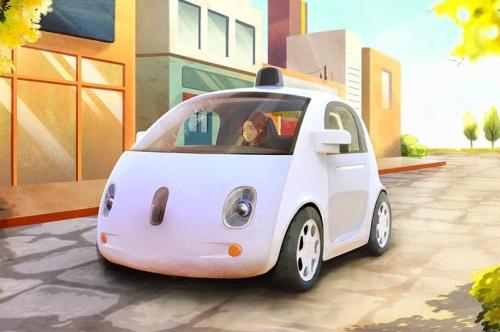谷歌计划打造自己的无方向盘自动驾驶汽车。这种自动驾驶汽车不会公开出售,但是谷歌周二说希望明年此时公共道路上有100辆这样的汽车行驶。

A very early version of Google's prototype vehicle

An artistic rendering of Google's autonomous vehicle
Google plans to build its own wheel-less self-driving vehicles.
The self-driving two-seater would not be sold publicly, but Google said Tuesday it hopes that 100 prototypes will be on public roads by this time next year.
Google Self-Driving Cars Director Chris Urmson said, "It was a big decision for us to go and start building our purpose field vehicles for this. And, really they're prototype vehicles. They were a chance for us to explore what does it really mean to have a self-driving vehicle. But in the small amount of time we've been working on it, you know, we have functional prototypes, and that’s exciting."
There is no steering wheel, no brake or gas pedals. Instead, buttons for go and stop. The electric-powered car is compact and bubble-shaped - something that might move people around a corporate campus or congested downtown. The top speed would be 25 miles per hour (or 40 kilometers per hour).
Those cars have Google-employed "safety drivers" behind the wheel in case of emergency. The new cars would eliminate people from the task of driving.
The cars are a natural next step for Google, which already has driven hundreds of thousands of miles in California with Lexus SUVs and Toyota Priuses fitted with a combination of sensors and computers.
Google is unlikely to go deeply into auto manufacturing.When unveiling the prototype, the company emphasized in its desire to partner with other firms.
Google co-founder Sergey Brin said, "The reason that I'm super excited about these prototypes and the self-driving car project in general is the ability to change the world and the community around it. I think some of these kinds of business questions - How will the service be operated? Will we operate it ourselves? Work with partners? - things like that, are things that we'll sort out when it's closer to being widely deployed. I think that these initial test vehicles we'll probably just operate a service ourselves because it's going to be a very specialized thing. But longer term it’s not clear, and we are most certainly going to partner with companies, possibly Uber."
The biggest obstacle could be the law. Test versions will have a wheel and pedals, because they must under California regulations.